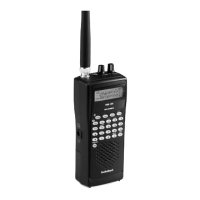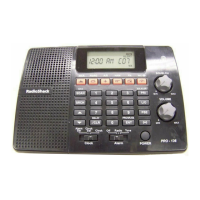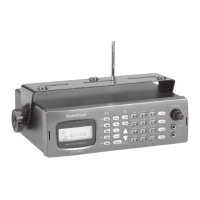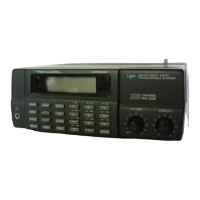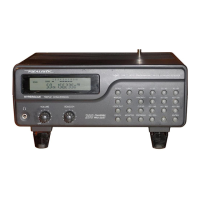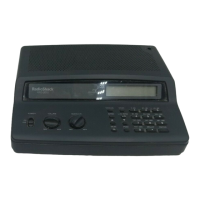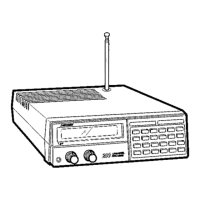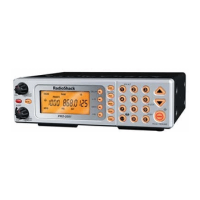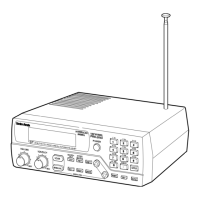To change the tag:
1. Press
T until the cursor highlights
Tag:.
2. Press SEL to edit the tag.
3. Enter the text using the text keys (up to 16
characters).
• When you press a key, the associated
letters appear on the screen. Press the
corresponding number. For example, when
you press ABC, A, B, and C appear on the
display. To select A, press 1. To select B,
press 2. To select C, press 3.
• For example, to enter the tag “FIRE”:
Press 3 (DEF), then 3 to choose F
Press 4 (GHI), then 3 to choose I
Press 7 (PQRS), then 3 to choose R
Press 3 (DEF), then 2 to choose E
• To enter a number, press 1, then press the
number key.
• To enter lowercase character or second-set
character for the 0 key, press the text key and
then press FUNC.
• Press W or X to move the cursor to another
digit to make adjustments.
• Press CL to clear text. Press FUNC CL to clear
the entire field.
4. Press ENT or the DONE softkey to store new
tag information.
See “
Appendix C: Text Entry and QuickText” on page
125 for more information on entering text.
Trunking Talkgroup Objects (TGRP)
A Trunking Talkgroup Object (TGRP) is a record
that stores the parameters for a trunked talkgroup
on a trunked radio system. A TGRP object
allows you to scan and monitor a talkgroup on a
particular trunked radio system.
Essential Parameters
As a standalone object, a TRGP object is similar
to a CONV object. However, for trunking to work,
the trunking system (TSYS) and the talkgroup ID
must be specified. We also recommend that you
label your TGRP object by giving it a name in
the TAG field, making it easier to find the TGRP
object later, and identifying it when the scanner
stops to monitor activity.
Trunking System (TSYS) Objects
The first time you make a TGRP for a particular
trunked radio system, you must also create a
TSYS object that contains the system parameters
associated with that trunked radio system. Once
you create a TSYS, you can use it over and over
again without having to re-enter all of the system
data.
A TSYS object has its own set of essential
parameters, and these parameters vary
depending on the type of trunked radio system
you plan to monitor. If you are a reasonably
experienced user, you probably already know
what the essential parameters are for the
system you wish to monitor. For example, each
TSYS must correctly specify the type of system
being monitored, the control channel or LCN
frequencies used by the system, and so on. A
detailed description of each type of system
supported by this radio and the essential
parameters required to make them work properly
is provided in “Appendix B: Detailed Menu Reference:
TSYS Menu” on page 113.
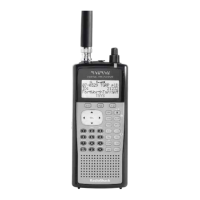
